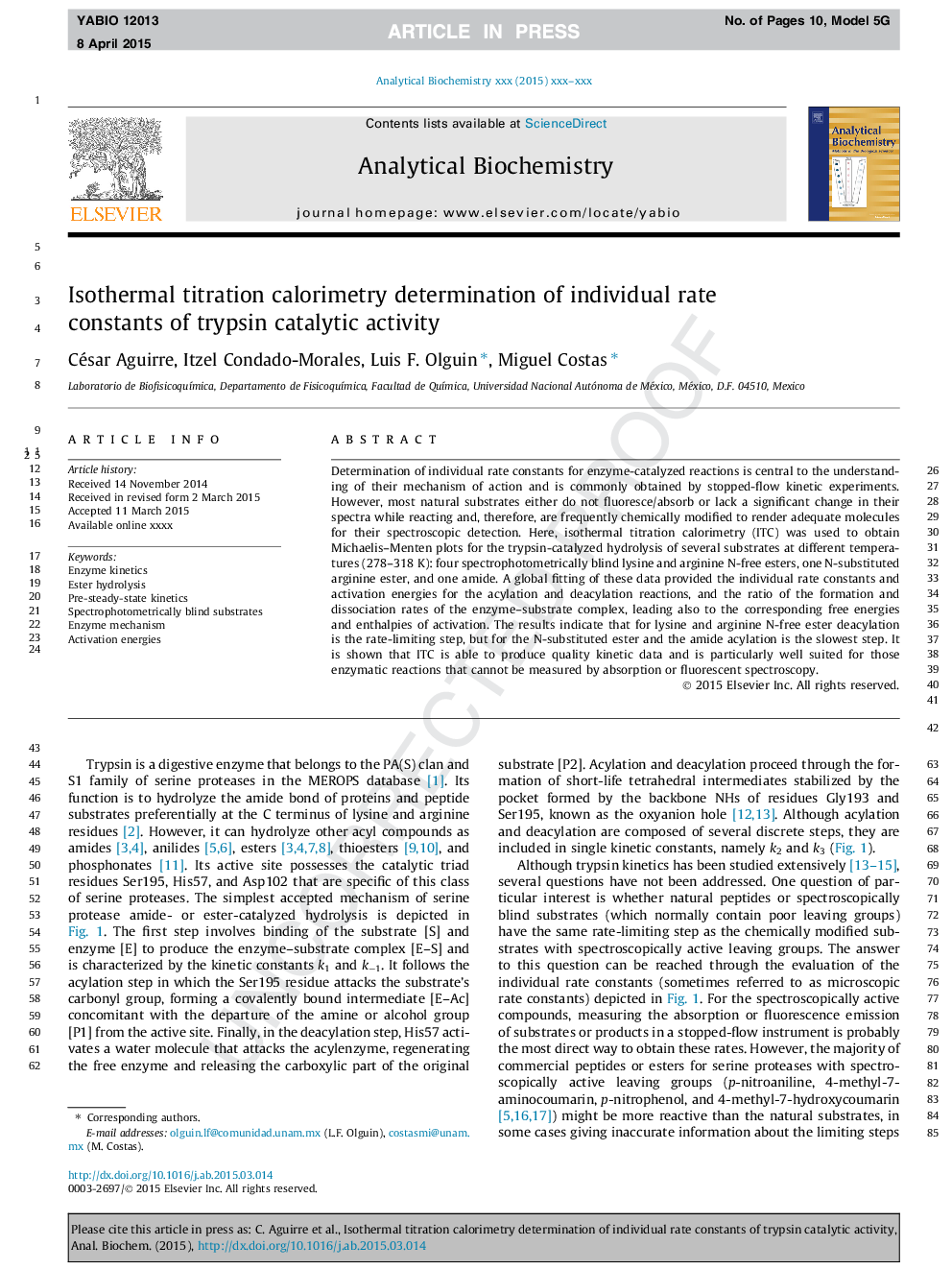| Article ID | Journal | Published Year | Pages | File Type |
|---|---|---|---|---|
| 7558343 | Analytical Biochemistry | 2015 | 10 Pages |
Abstract
Determination of individual rate constants for enzyme-catalyzed reactions is central to the understanding of their mechanism of action and is commonly obtained by stopped-flow kinetic experiments. However, most natural substrates either do not fluoresce/absorb or lack a significant change in their spectra while reacting and, therefore, are frequently chemically modified to render adequate molecules for their spectroscopic detection. Here, isothermal titration calorimetry (ITC) was used to obtain Michaelis-Menten plots for the trypsin-catalyzed hydrolysis of several substrates at different temperatures (278-318Â K): four spectrophotometrically blind lysine and arginine N-free esters, one N-substituted arginine ester, and one amide. A global fitting of these data provided the individual rate constants and activation energies for the acylation and deacylation reactions, and the ratio of the formation and dissociation rates of the enzyme-substrate complex, leading also to the corresponding free energies of activation. The results indicate that for lysine and arginine N-free esters deacylation is the rate-limiting step, but for the N-substituted ester and the amide acylation is the slowest step. It is shown that ITC is able to produce quality kinetic data and is particularly well suited for those enzymatic reactions that cannot be measured by absorption or fluorescence spectroscopy.
Keywords
Related Topics
Physical Sciences and Engineering
Chemistry
Analytical Chemistry
Authors
César Aguirre, Itzel Condado-Morales, Luis F. Olguin, Miguel Costas,
